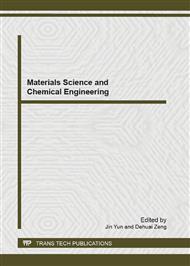p.150
p.155
p.161
p.167
p.173
p.179
p.184
p.189
p.194
Study on the Corrosion Performance of Reinforced Concrete by Using the Seawater Hot Rain Testing Equipment
Abstract:
In order to investigate the corrosion performance of reinforced concrete in the marine environment, the seawater hot rain testing (SHRT) equipment was used to imitate the marine environment and accelerate corrosion rate by circularly spraying seawater to the samples under high temperatures which can attain 70°C. The test results show that SHRT can accelerate the chloride ion permeability which can quickly investigate the corrosion performance of reinforced concrete. Different types of material admixtures have different influences on the corrosion performance of reinforcement concrete, and rust inhibitor and cementitious capillary crystalline material can improve the anti-rust resistance of reinforced concrete effectively.
Info:
Periodical:
Pages:
173-178
Citation:
Online since:
May 2013
Authors:
Price:
Сopyright:
© 2013 Trans Tech Publications Ltd. All Rights Reserved
Share:
Citation:


